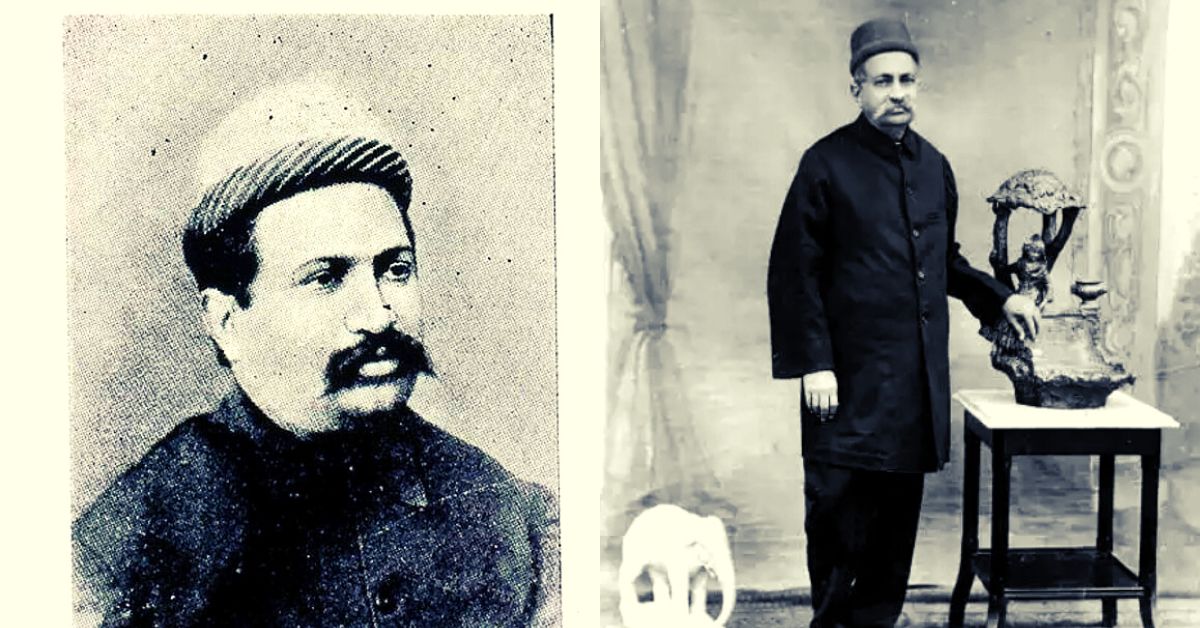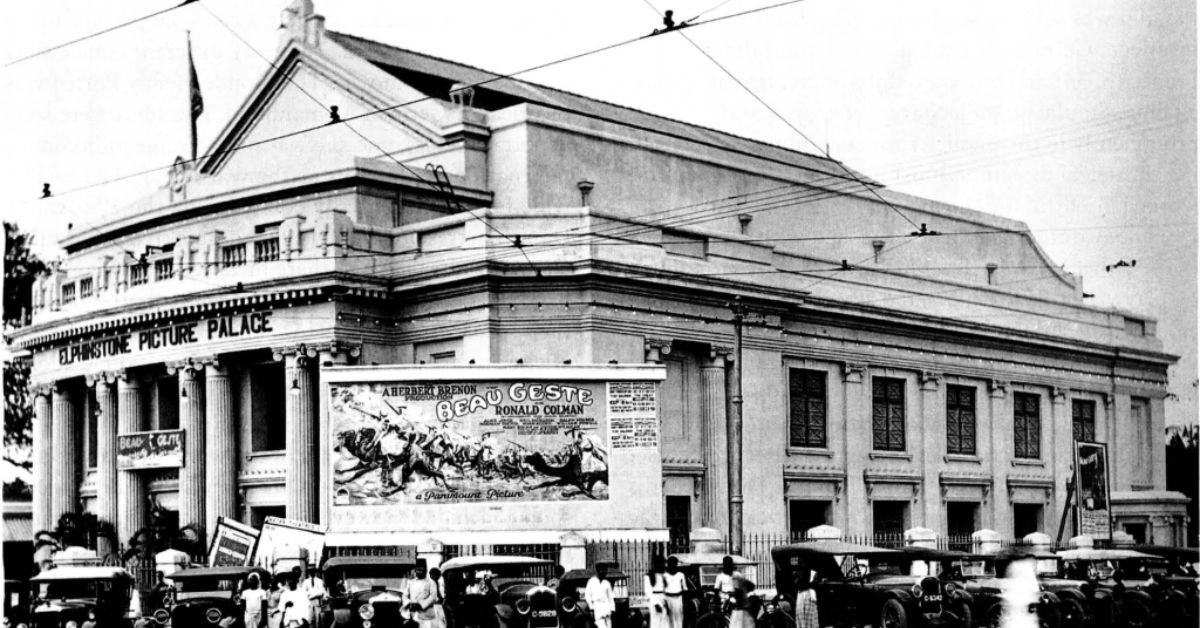A Curtain Puller at Drama Clubs Once Controlled 50% of India’s Box Office Collections
Jamshedji Framji Madan, a Parsi businessman, film magnate and owner of Madan Theatres, was responsible for more than 100 silent films and ‘talkies’ in the early years of the Indian film industry.

Jamshedji Framji Madan — the Parsi business person, film magnate and owner of Madan Theatres, who at one point controlled more than 50% of box office collections during India’s silent film era — started his career in the entertainment business as a curtain puller for an amateur drama club.
From curtain puller, he went on a remarkable journey which saw him introducing a whole new medium of entertainment for the Indian public. In his rich career, he built a network of cinema halls, cinema tents and a movie distribution and production business responsible for more than 100 silent films and ‘talkies’ in the nascent years of the Indian film industry. (Above images courtesy Wikimedia Commons)
Starting out as Elphinstone Bioscope Company in 1902, Madan Theatres at one point became the largest filmmaking, distributor and theatre business in India. Besides bringing the early film business to Calcutta, Madan Theatres is said to have also controlled 127 theatres at its peak.
Found this rare share certificate of Madan Theatres limited 1919 by JF Madan pioneer of early silent films and tent cinema and they went on to be the largest exhibitors with 127 cinema halls in the 20s… pic.twitter.com/0uwsrqzcC7— Shivendra Singh Dungarpur (@shividungarpur) July 7, 2018
Drama — Madan’s first love
JF Madan was born on 27 April 1856 in Navsari, Gujarat, and grew up in relative prosperity in Bombay (Mumbai) before his father endured financial ruin owing to substantial money he lost in a land scheme.
This compelled a young Madan to find work early on and he joined an amateur drama club, Elphinstone Natak Mandali, as a curtain puller and then an actor in 1868. Madan was a natural on stage and travelled the length and breadth of India with the drama club.
In his late twenties, he decided to start his own business as a wine merchant and general provisions supplier and moved to Calcutta (Kolkata).
Success in business meant that he became a leading supplier of liquor and provisions to the British Indian Army. But he used the profits generated from his businesses to produce plays, build dance and theatre halls, playhouses and even bought the famous Corinthian Theatre and Alfred Theatre in Calcutta.
At the turn of the 20th century, movies from the West were being shown to audiences in India. Seeing an opportunity, he established the Elphinstone Bioscope Company (a precursor to Madan Theatres) to exhibit foreign films in the city.
“As early as 1902, he bought cinema equipment from an agent of the Pathe company [in France] and began organising ‘bioscope’ showings in tents pitched at various key locations in Calcutta. As his business began to prosper, Madan realised the need to have permanent locations so that he could expand and consolidate his business for exhibition of films,” wrote Karan Bali for Upperstall.com, an independent platform covering cinema in India.
According to Devasis Chattopadhyay, a columnist and communications specialist writing for Live History India, Madan also began producing and exhibiting a series of silent movies including ‘Great Bengal Partition Movement: Meeting and Procession’ by Jyotish Sarkar in 1905.
In 1907, he built India’s first purpose-built cinema hall, the Elphinstone Picture Palace in Kolkata (recently demolished as Chaplin Theatre) for exhibition of the films he acquired. According to Bali, “He then expanded by building a chain of such picture halls and within a short period, Madan’s empire extended across India, Burma and Ceylon [Sri Lanka],” wrote Bali.
Another major milestone came in 1911 when Madan filmed the IFA Shield football final in Kolkata between the legendary Mohun Bagan Football Club and an all-English football team. This was the first time a sporting event in India was filmed.
About two years later in 1913, however, the penny dropped for Indian cinema as the legendary Dadasaheb Phalke released India’s first indigenously made feature film, Raja Harishchandra. This opened the floodgates of locally-made cinema.
In 1917, Madan also jumped on this bandwagon and produced silent films like Satyavadi Raja Harishchandra, an abridged version of Phalke’s pioneering film. This was also the first full-length feature film to be shot in Calcutta.
To supplement his coffers, he also acquired the exclusive rights to exhibit Pathé Frères films, a major French film equipment and production company, in the Indian subcontinent.
But the period during 1914 and 1918 (World War I) also saw him thrive in his other business as a supplier of provisions to the British Indian Army. In 1918, he was even awarded the title of Officer of the Order of the British Empire (OBE) for his services in the war.
A year later, he launched India’s first first ever corporate filmmaking company. According to Devasis Chattopadhyay, he took his Parsi theatre, mimicry production and silent filmmaking businesses and established the Madan Theatres Limited. It was officially incorporated on 27 September 1919 and was registered with the Registrar of Companies in Calcutta.
“Madan Theatres Ltd began its filmmaking journey with Bilwamangal (1919). The film was directed by Rustomji Dotiwala and starred Dorabji Mewawala in the title role alongside a popular stage actress, Miss Gohur, playing the temptress, Chintamani,” wrote Bali.
“Thought to be lost forever as Madan lost almost all of their films in a major fire, about 20-odd minutes of the film have been miraculously traced out and given to the National Film Archive of India (NFAI) from the Cinematheque Francaise in Paris. The footage shows that Bilwamangal had a rather sophisticated art direction for the time and includes among other scenes, Bilwamangal arguing with his father and a dance by Chintamani,” he added.
Until the Wall Street Crash of 1929, his company Madan Theatres became the largest filmmaking, distributor and theatre business in India. They were the first exhibitors of talkies in India. In 1931, just months after Ardeshir Irani directed and produced India’s first ever talkie Alam Ara, Madan Theatres produced the first Bengali talkie, Jamai Sashthi.
A year later, the company produced Indra Sabha, a film directed by his third son JJ Madan, which till this day holds the world record for most songs in a single film at 71.
“Going by popular trends, most of the Madan films were mythologicals but they did explore the odd fantasy or social subject as well. Initially, their artists came from the stage, the lead actresses were usually Anglo-Indian girls who took Indian pseudonyms,” wrote Bali.

Demise and downfall
However, he died before witnessing these milestones on 30 June 1923.
What’s worse is that six years after his death, the film production empire he built suffered massively due to the Wall Street Crash. By the mid 1930s, his theatre network and a massive chunk of his film business were gone. In 1937, Madan Theatres produced its last film before shutting down for good.
JF Madan was a pioneer of India’s film industry, but remains forgotten today even by the city of Calcutta (Kolkata), for whom he gave so much. If you found our stories insightful, informative, or even just enjoyable, we invite you to consider making a voluntary payment to support the work we do at The Better India. Your contribution helps us continue producing quality content that educates, inspires, and drives positive change. Choose one of the payment options below for your contribution- By paying for the stories you value, you directly contribute to sustaining our efforts focused on making a difference in the world. Together, let’s ensure that impactful stories continue to be told and shared, enriching lives and communities alike. Thank you for your support. Here are some frequently asked questions you might find helpful to know why you are contributing?

But, according to the Madan Theatres Research Group, “Today Madan Street in central Kolkata still honours JF Madan’s philanthropy, which included considerable donations to Calcutta’s poorest people and the Parsi community. A few topical films survive and the NFAI have successfully recovered parts of two Madan-produced feature films. With the single-screen era now over, but interest in the origins of Indian film growing by the day, work is underway to better record and preserve this important period in the country’s history.”
Finding Traces of J.F.Madan in the streets of Kolkata the first Movie Moghul of India setting up Madan Theatres Limited with 127 movie theatres in 1920’s …now his office a Hotel in their memory and a street named after him…a few cinema halls built by him survives… pic.twitter.com/qRhktLiiNS— Shivendra Singh Dungarpur (@shividungarpur) February 23, 2021
Sources:
‘The Parsi Pioneer of the Bengali Film Industry’ by Devasis Chattopadhyay; Published on 2 October 2022 courtesy Live History India
‘JF Madan’ by Karan Bali, Published on 24 September 2016 courtesy Upperstall.com
Madan Theatres Research Group
This story made me
-
97
-
121
-
89
-
167













